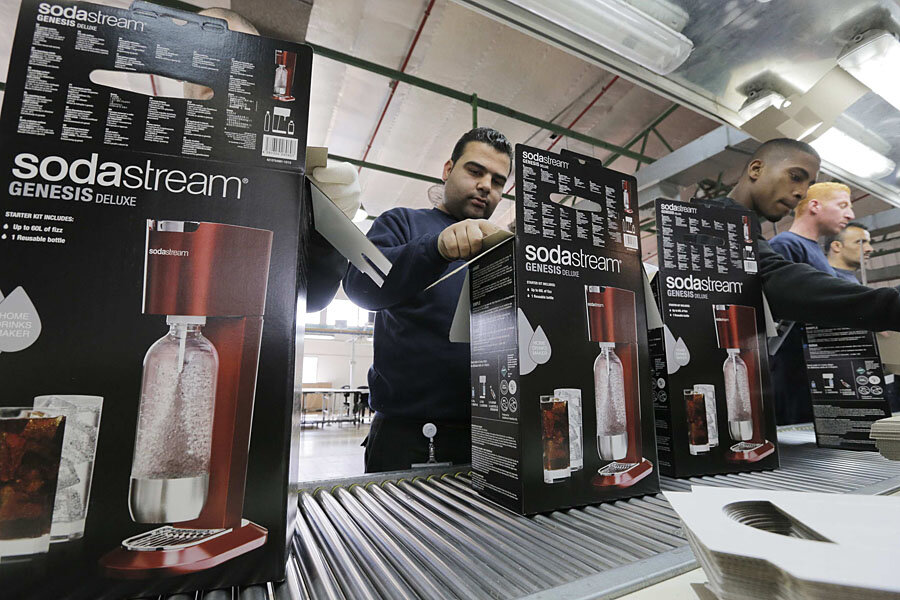What happened to SodaStream?
Loading...
| New York
SodaStream says it isn't winning over enough new customers in the U.S. and reported preliminary sales that fell short of Wall Street expectations.
The company's stock tumbled 21 percent to $21.90 in afternoon trading. Over the past year, its stock has lost more than half its value.
CEO Daniel Birnbaum said Tuesday that the Israeli company's U.S. business underperformed in the third quarter because of lower-than-expected demand for its soda makers and flavors. While it successfully established a base of repeat users in the U.S., Birnbaum said SodaStream isn't attracting new users at the rate the company would like.
"We are very disappointed in our recent performance," Birnbaum said in the report. "Our U.S. business underperformed due to lower than expected demand for our soda makers and flavors which was the primary driver of the overall shortfall in the third quarter. While we were successful over the last few years in establishing a solid base of repeat users in the U.S., we have not succeeded in attracting new consumers to our home carbonation system at the rate we believe should be achieved. The third quarter results are a clear indication that we must alter our course and improve our execution across the board. We have already begun a strategic shift of the SodaStream brand towards health & wellness, primarily in the U.S., where we believe this message will resonate more strongly with consumers. In addition, we are developing a comprehensive growth plan for the Company that will encompass Marketing, Product and Innovation, Distribution, Operations and Organization. We intend to share more specifics around our growth plan when we report third quarter results later this month."
"We have a strong balance sheet and are well positioned with ample liquidity to invest in the areas of our business that we believe will fuel profitable growth in the years ahead," he continued. "Despite our current challenges, we continue to be very confident in our business model and the global prospects for SodaStream. We firmly believe that our actions to shift the brand and improve execution will strengthen our leadership position in the home carbonation category and deliver enhanced shareholder value."
SodaStream International said revenue for the third quarter is expected to be about $125 million. That's down from $144.6 million a year ago, and below the $153.6 million analysts expected, according to FactSet. The company is scheduled to report final results for the period Oct. 29.
Birnbaum says the company has shifted its focus to play up SodaStream's "health and wellness" benefits.
SodaStream has touted its machines as a cheaper, more environmentally friendly alternative to buying bottled or canned drinks such as Coke and Pepsi. It has been trying to make a splash in the U.S. and advertised in the last two Super Bowls, with the latest commercial featuring actress Scarlett Johansson. Although the machines are in just 1 percent of U.S. homes, the company has noted it's in as many as 25 percent of homes in Sweden.
Depending on the model, SodaStream machines cost between $80 and $130 and are powered by CO2 cartridges, which cost about $30 and need to be replaced after a certain number of uses. Customers who bring back used canisters can get a discount on a refill.
SodaStream's machines will soon face some formidable competition, however.
Keurig Green Mountain, which is known for its single-serve coffee makers, is expected to introduce a machine for cold drinks in coming months. Earlier this year, Coca-Cola Co. announced it was buying a stake in Keurig and that it would make some of its well-known beverage brands available for the "Keurig Cold."







